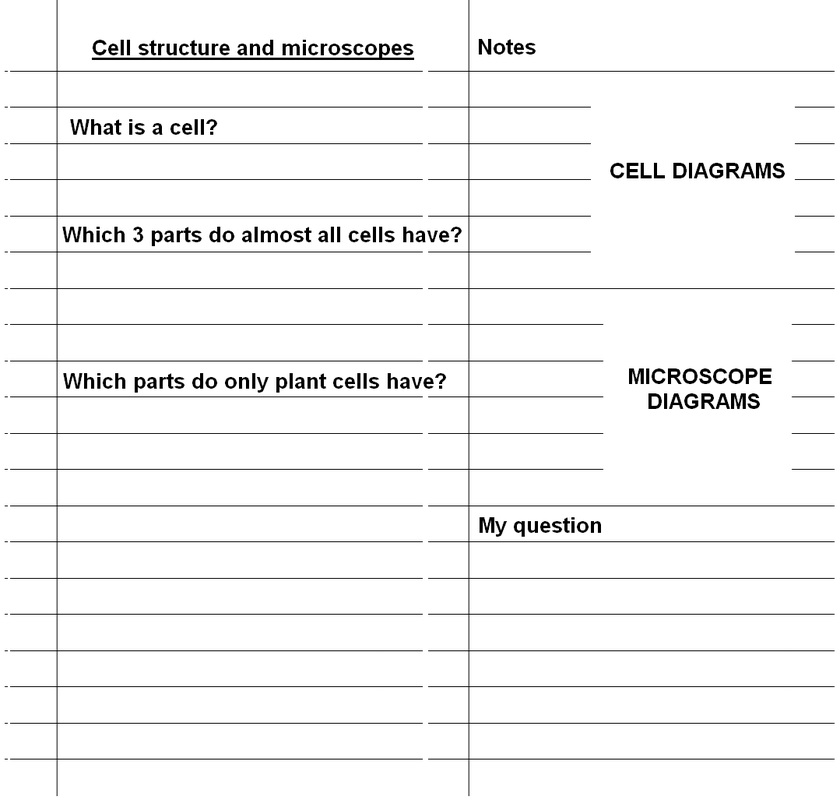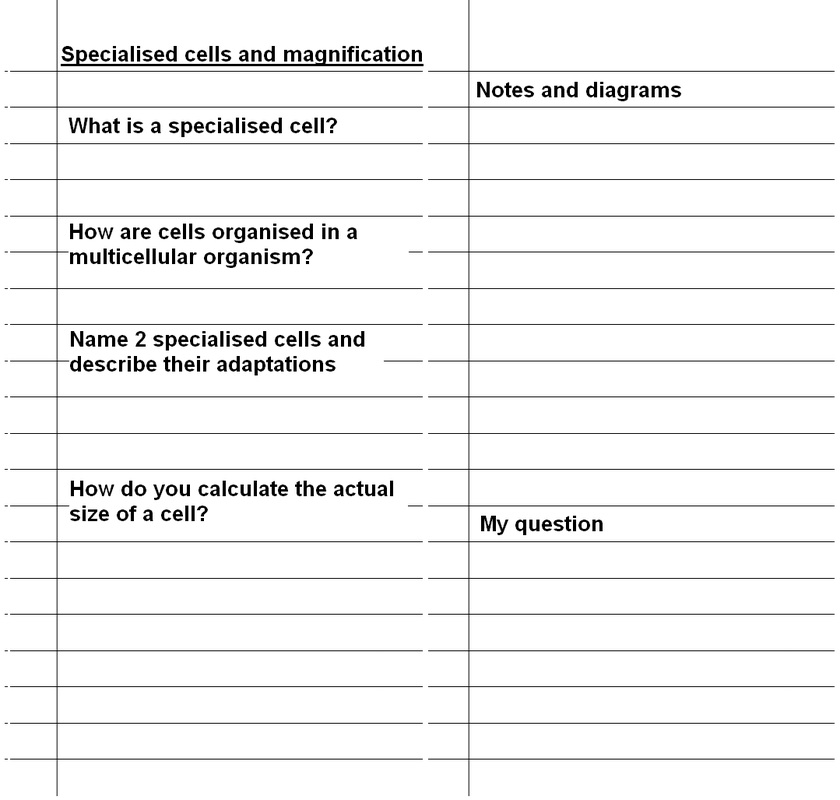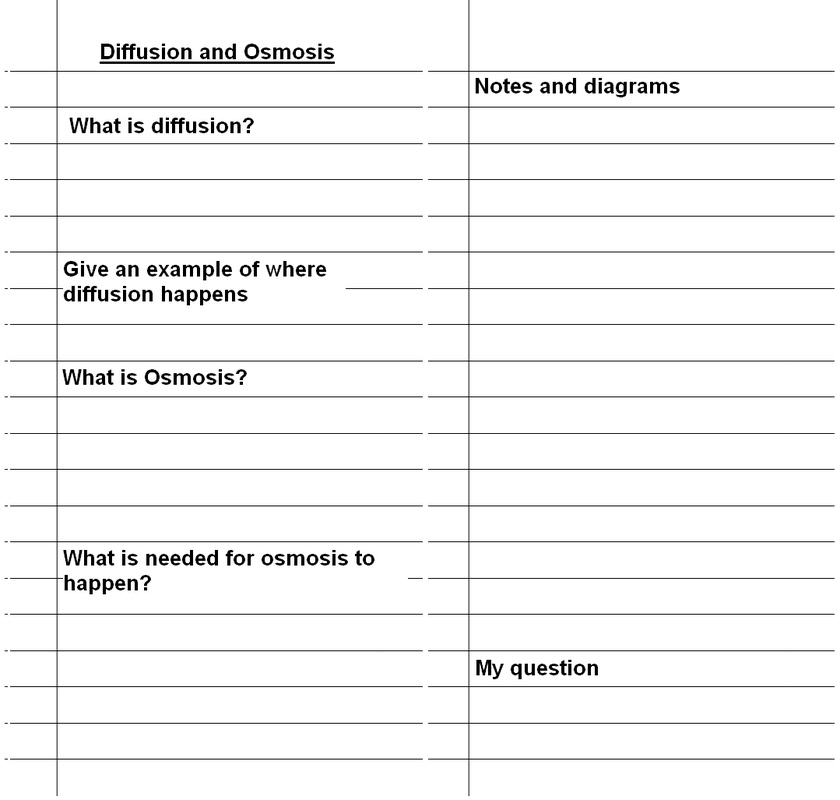IGCSE BIOLOGY
B2 cells
|
Before you start you can look back at 7A Cells.
This unit builds on your previous knowledge about cell structure and specialised cells. You will then learn about how substances move in and out of cells. If you only remember one thing: PLANT AND ANIMAL CELLS HAVE CELL MEMBRANE, CYTOPLASM AND NUCLEUS |
LESSON 1: CELL STRUCTURE AND MICROSCOPES
By the end of this lesson students will be able to:
Before you start the lesson make sure your notebook looks like this:
- Label diagrams of plant and animal cells
- Name the differences between plant and animal cells
- Use a microscope
Before you start the lesson make sure your notebook looks like this:
This lesson has 2 parts:
1. Cells Video
1. Cells Video
2. Microscope simulation
Use this online activity from virtual urchin to label your microscope diagram and practice using the microscope.
Use this online activity from virtual urchin to label your microscope diagram and practice using the microscope.
LESSON 2: cell size and specialisation
By the end of this lesson students will be able to:
Before you start the lesson make sure your notebook looks like this:
- Name at least 2 specialised cells and explain how they are specialised
- Calculate the actual size or magnification of an object seen using a microscope
Before you start the lesson make sure your notebook looks like this:
B2 LESSON 2 VIDEO
EXTRA RESOURCES
- Look at this animation from the University of Utah to see how big cells are.
- Have a look at the cells alive website.
- This is an excellent presentation that explains cell size very well (a bit harder than IGCSE level though)
LESSON 3: Movement into and out of cells
By the end of this lesson students will be able to:
Before you start the lesson make sure your notebook looks like this:
- Describe the process of diffusion
- Describe the process of osmosis
- Explain what happens to cells when placed in pure water or strong salt solutions
Before you start the lesson make sure your notebook looks like this:
This lesson has 2 parts:
1. Diffusion video
1. Diffusion video
2. Osmosis video
The Osmosis song! (some advanced vocabulary)



